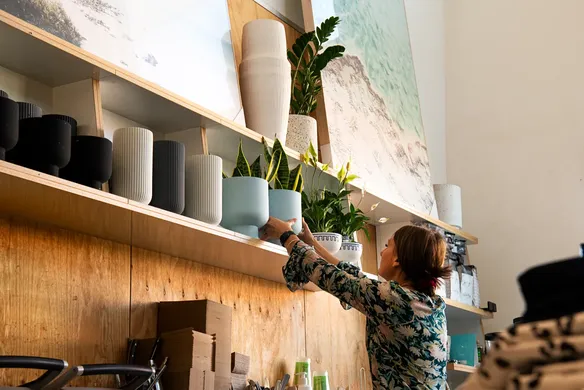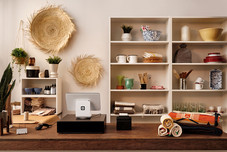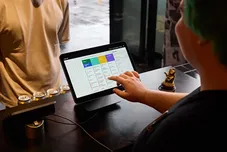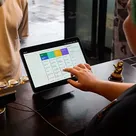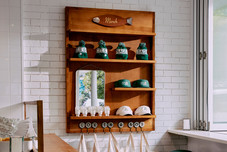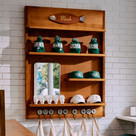Table of contents
There are two key locations in every retail store: the point of purchase, otherwise known as the POP, and the point of sale, otherwise known as the POS.
POP, POS; At first glance, there doesn’t seem to be much difference between the two.In this article, we’ll be taking the time to understand what point of purchase and point of sale are, how they work, how they differ from each other, and how you can use this knowledge to increase your business’s bottom line.
What is Point of Purchase (POP)?
Before a customer pays for an item, they must first decide to buy that item. This is what happens at the point of purchase, or POP. The point of purchase is an area of a store that is designed to compel a customer to choose to put a product in their shopping cart, often through specialised POP displays.
Think of a visit to the supermarket. As you make your way through the entrance you are met with a large floor display or dump bin that showcases a particularly tempting weekly special. As you wander through the store you see a new display at the end of every aisle, where a great deal is offered or a new product is promoted. More POP displays greet you at the checkout, where clip-strip mounted chocolates and chewing gums are presented in a way that tempts you – or perhaps more accurately, your kids – into making an impulse purchase.
Point of purchase displays also feature in online stores – think of deals that pop-up as you’re browsing, or the suggested item feature on Amazon that offers up products that complement those already in your cart.
The intent behind all these displays is the same: to get a customer to notice a product, to consider and to ultimately buy a product. These micro-decisions are made throughout your shopping journey and a whole field of POP science is devoted to increasing the likelihood of a customer grabbing a product.
What is Point of Sale (POS)?
The Point of Sale is where the actual sale happens – the supermarket checkout counter, the online checkout page, the café till or the handheld payment device at the market stall.
The POS is the final point of the purchase journey – the culmination of all the point of purchase decisions made earlier. It is here that the payment is processed, and the ownership of the products chosen by the customer is transferred to that customer.
But with the help of technology, a point of sale can do far more than simply take payment. For many businesses the POS represents the hub from which they manage their enterprise, obtaining customer information, checking stock, offering loyalty programs, managing employees and more.
What is the difference between POP and POS?
POP and POS can be viewed as two key stages of the customer journey, with one leading organically into the other. After a customer enters a retail store, whether physical or digital, they are met with a succession of points of purchase designed to compel them to put products in their cart.
Once they’ve finished shopping they make their way to the point of sale, the functional end point where the final transaction is conducted.
The POP and POS are therefore different but complementary points in the customer journey, and the best retailers put a focus on maximising the effectiveness of each.
The role of Point of Purchase
Let’s take a deeper dive into the point of purchase. What is its role exactly, and how might your business better utilise POP displays? Brick-and-mortar POP is a very different proposition to ecommerce POP, so let’s look at these separately.
POP in brick-and-mortar stores
In a brick-and-mortar retail store, the role of POP is to successfully take a customer through almost the entire sales funnel in seconds. An effective POP display will use eye-catching design to make a customer aware of a product or deal. It will back this initial effort up with a message that causes the customer to consider that product or deal – compelling copy, a great price, a limited-time offer. Ultimately, it will compel the customer to put the item in their basket.
POP in online stores
Browsing online is a very different process to browsing in-store. Customers tend to be far more targeted in terms of the products they look at online, which means that there are fewer chances for POP displays to work their magic. Nonetheless, cleverly designed web page pop-ups or strategic product suggestions can induce the same awareness, consideration and purchase process described above, but in a digital setting.
The role of Point of Sale
The role of the point of sale can change from business to business – a market stall holder, an online retailer and a restaurant all need very different things from their POS. Let’s take a closer look at what those needs are, and how a POS might meet them.
POS in brick-and-mortar stores
In a brick-and-mortar setting, the point of sale can be anything from the place where a transaction can be processed, to the hub from which all store management is conducted. Think of a small stall holder selling homemade candles who simply needs a machine to process card payments, that’s a POS. Now think of a café that needs a system capable of not only taking payments, but tracking meals on multiple tables, sending orders to the kitchen, running a customer loyalty program and managing the shifts of every team member.
POS in online stores
The point of sale for an ecommerce retailer will be the Online Checkout. Like a brick-and-mortar POS, the complexity and capability of such a POS can vary greatly, from the most basic through to systems that offer all the bells and whistles. Think of how airlines offer loyalty programs, upsell and cross-sell opportunities and more during the checkout process.
How Square for Retail helps stores drive more sales
The best POS systems, whether in-store or online, are those that are powerful, feature-rich, and capable of offering all the functionality you need, but that remain simple, intuitive and affordable.
Like Square for Retail.
Square for Retail is the ultimate retail POS system. It not only offers your customers a wealth of ways to pay while sending you the money faster and more securely, it also:
- Promotes customer loyalty: Square for Retail grants you access to Square Loyalty, a customer loyalty program that helps you build better relationships and that will have your best clients returning again and again.
- Manages your inventory: Enjoy an ultra-intuitive, multi-location inventory management system that can be controlled right from your POS. Check stock for customers on the spot and help avoid items being out of stock.
- Manages your team: Team management has never been simpler than with Square for Retail. Create and publish your roster, track hours, process holiday requests, apply commissions and put your team in control with custom permissions.
- Integrates with your online store: With easy ecommerce integration, Square for Retail spans the physical and digital arms of your business. Integrate your POS with your online store to create a more seamless customer experience.
POP and POS. They’re similar concepts in name and in nature, but understanding the subtle differences between the two is key to capitalising on both.With the help of Square’s complete suite of business solutions, you can do exactly that.
![]()

